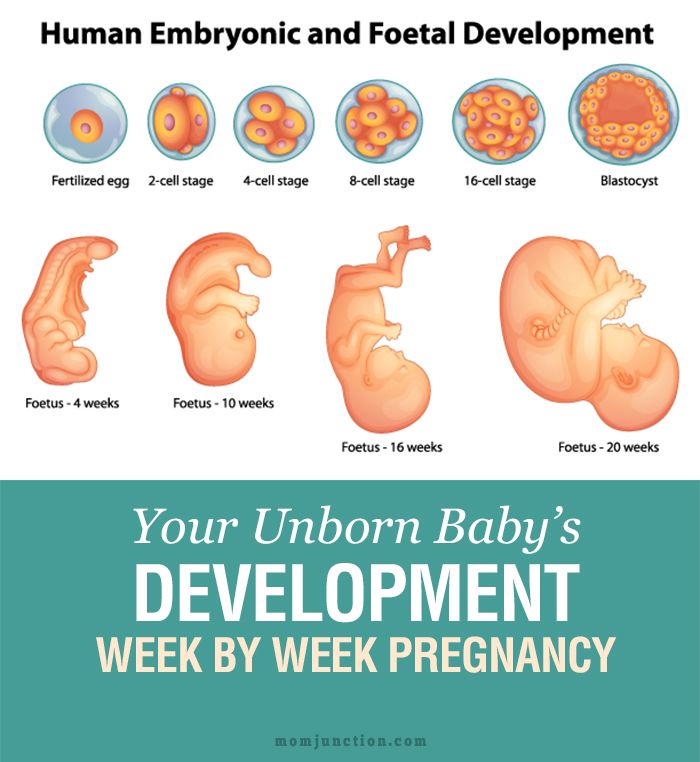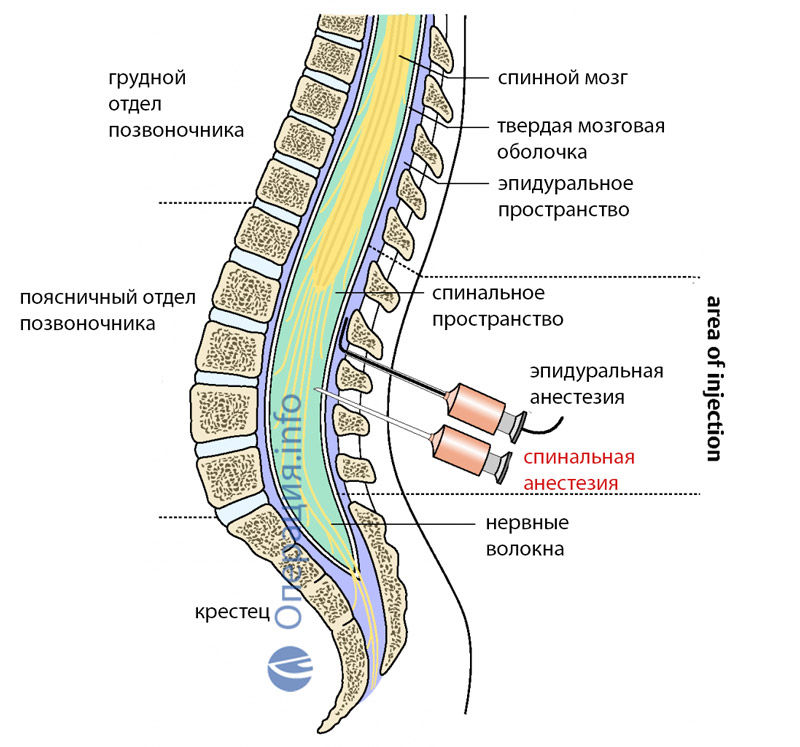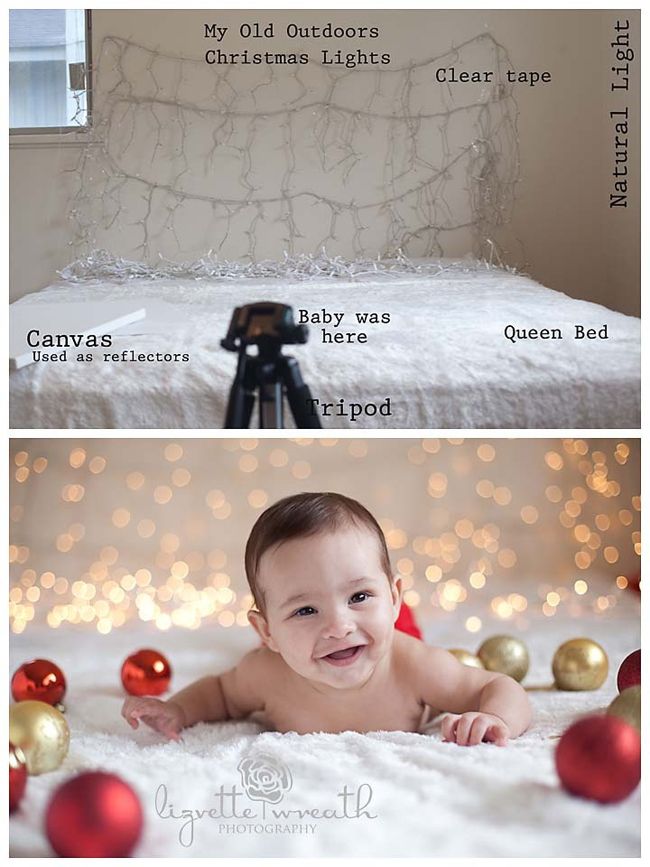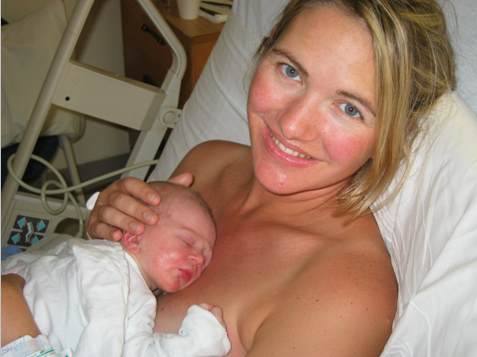Developmental motor skills
Gross motor skills: birth to 5 years
What are gross motor skills?
Gross motor skill development involves the large muscles in the arms, legs and torso. Gross motor activities are important to everyday physical activities like walking, running, throwing, lifting, kicking, etc. Gross motor abilities also form the basis for fine motor skills and relate to body awareness, reaction speed, balance and strength. Learn more about all developmental milestones by age.
Gross motor development milestones: General physical activity guidelines for children ages 0 to 5 years
Newborn to 2 months- Turns head to both sides while on back
- Lifts head and able to turn to both sides while on belly
- Head lag with pull to sit
- Kicking both legs and moving both arms equally while on back
- Performs tummy time on floor regularly
- Raises head in line with trunk when pulled to sit
- Pushes up on forearms and turn head side to side while on belly
- Tolerates tummy time well
- Rolls from belly to back
- Rolls from back to belly
- Brings feet to mouth laying on back
- Pushes up on hands with arms extended while on belly
- Pivots in a circle while on belly to each side
- Sits alone
- Reaches for toys to play in sitting
- Catches self with loss of balance in sitting
- Crawls on belly
- Moves between laying down and sitting upright without help
- Crawls on hands and knees
- Pulls to a standing position with one foot leading
- Cruises around furniture
- Walks with two hands held
- Walks with one hand held
- Stands alone for a few seconds
- Crawls up stairs
- Stands up from the floor without support
- Walks alone well
- Squats and stands back up without holding onto support
- Walks up stairs with hands or rails to help
- Crawls down the stairs (on belly, feet first)
- Can run, though falls easily
- Kicks a ball forward
- Walks and runs fairly well
- Jumps in place with both feet off the ground
- Walks up and down stairs alone
- Kicks a ball with either foot
- Balance on one foot for a few seconds
- Jump forward 10-24 inches
- Catches a large ball
- Rides a tricycle
- Can run, jump and climb well, is beginning to skip
- Hops proficiently on one foot
- Can do hopscotch
- Catches a ball reliably
- Begins somersaults
- Skips on alternate feet and jump rope
- Begins to skate and swim
- Rides bicycle with/without training wheels
- Climbs well
This information is a general guide to help you determine if your child is progressing at the rate expected for his or her age. Please keep in mind that each child is unique and develops skills at their own rate.
Physical activity recommendations
By exploring many different types of movement, your child can build the confidence, motivation and physical competence to engage in an active lifestyle.
According to the American Heart Association, a daily dose of at least 60 minutes of moderate-to-vigorous physical activity is recommended for children ages six to seventeen years old. Infants and toddlers are recommended to get 180 minutes of activity spread throughout the day based on the American Academy of Pediatrics. It is suggested that both structured play as well as unstructured play should be incorporated throughout the day.
Ideally, children should participate in 60 minutes of continuous activity. However, for both older children and toddlers the daily amount of activity can be split up throughout the day. For example, two 30-minute segments or four 15-minute segments for children is still beneficial.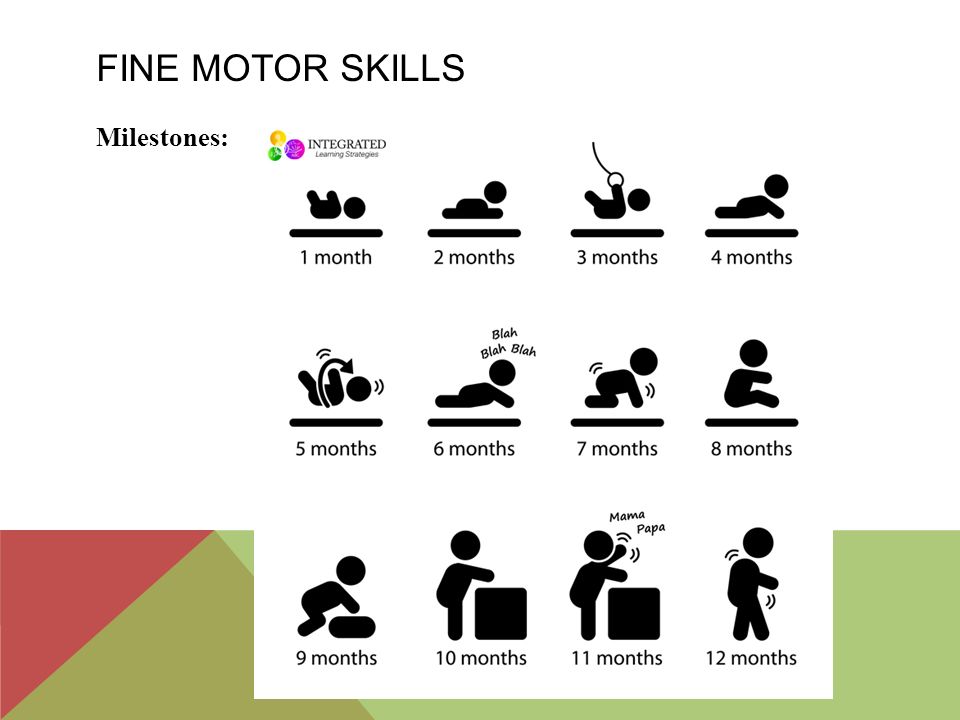 Whether you’re at home or on the playground, here are some activities, that with proper guidance, may encourage your child to get moving: •
Whether you’re at home or on the playground, here are some activities, that with proper guidance, may encourage your child to get moving: •
Indoor:
- Infants/toddlers: crawling and walking over various surfaces such as creating obstacles with pillows and blankets; sitting with support at torso on an exercise ball, mommy/daddy and me classes (yoga, tumbling, swimming)
- Children: bounce house play, jump rope activities, yoga, dance, gymnastics, cheerleading
Outdoor:
- Infants/toddlers: mommy/daddy and me swim classes; water play in buckets or playing at water tables; infant/toddler swings or slides at the playground; obstacles over various surfaces such as gravel, grass
- Children: swimming, sprinkler water play, water parks, marco polo, ice skating, snow tubing, sledding, roller skating, skateboarding, playgrounds, riding scooters, tricycle and bicycle riding, hiking, jumping and hop scotch activities, soccer, baseball, swinging
Our therapy programs can also help bring out the best in your child. From aquatic therapy, to sports therapy and more, our team takes an integrated approach, using the right therapy or therapies your child needs at the right stage in their development. We can help your child learn or regain the skills they need to be successful during everyday activities and participate with peers.
From aquatic therapy, to sports therapy and more, our team takes an integrated approach, using the right therapy or therapies your child needs at the right stage in their development. We can help your child learn or regain the skills they need to be successful during everyday activities and participate with peers.
Problems with reaching developmental milestones? How to improve your child’s gross motor skills
If you have concerns regarding your child’s development or your child is regularly missing development milestones, physical therapy can assess development and address concerns. If you are concerned about your child's development of gross motor skills, a physician or therapist may be able to assist with an evaluation.
Physical therapists can provide a comprehensive examination of your child’s strength, balance, coordination and gross motor skills in order to determine barriers to safe body movement. We provide therapeutic activities that are engaging and specific to a child’s age, cognitive status, ability level and interests.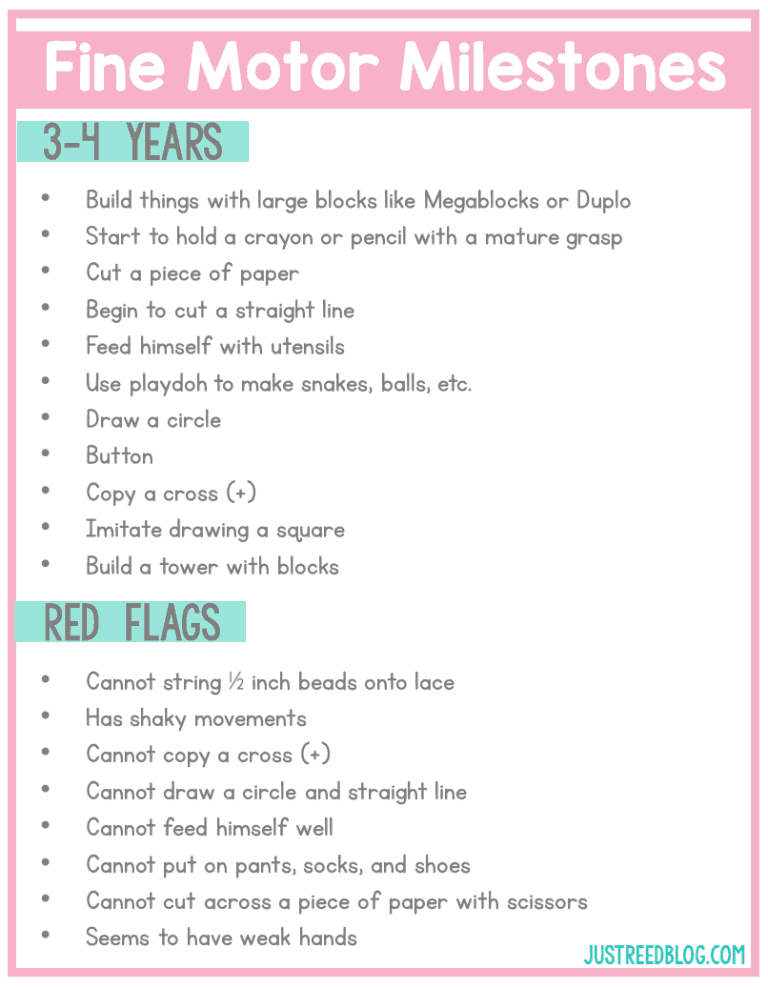
To make an appointment with a pediatric physical therapist, call one of these locations:
- Bon Air Therapy Center 804-323-9060
- Brook Road Campus 804-228-5818
- Fredericksburg Therapy Center 540-891-4485
- Glen Allen Therapy Center 804-273-6656
- Petersburg Therapy Center 804-733-7233
- Stafford Therapy Center 540- 659-7337
Information provided by Kristen McBee PT, DPT; Anisha Craft PT, DPT, PCS; Renee Leiby PT, DPT and Jan Steinberger PT, DPT.
Toddler development - motor skills
Toddler development - motor skills | Pregnancy Birth and Baby beginning of content7-minute read
Listen
Children grow and develop fast during their toddler years. They start exploring their world more independently. Their coordination improves, and they begin doing more things for themselves. There are many ways in which you can help your toddler develop both their fine and gross motor (movement) skills.
They start exploring their world more independently. Their coordination improves, and they begin doing more things for themselves. There are many ways in which you can help your toddler develop both their fine and gross motor (movement) skills.
What are motor skills?
Children develop 2 types of motor (movement) skills:
- fine motor skills
- gross motor skills
Fine motor skills involve using your hands and fingers to control small objects.
Gross motor skills involve using the large muscles in your body to make large movements.
Fine motor skills
Fine motor skills engage the small muscles in the hands and fingers so your child can:
- hold
- grasp
- grip
- pinch
Examples of fine motor skills are:
- buttoning up a shirt
- holding a pencil
- picking up food
Children develop fine motor skills so they can learn how to look after themselves.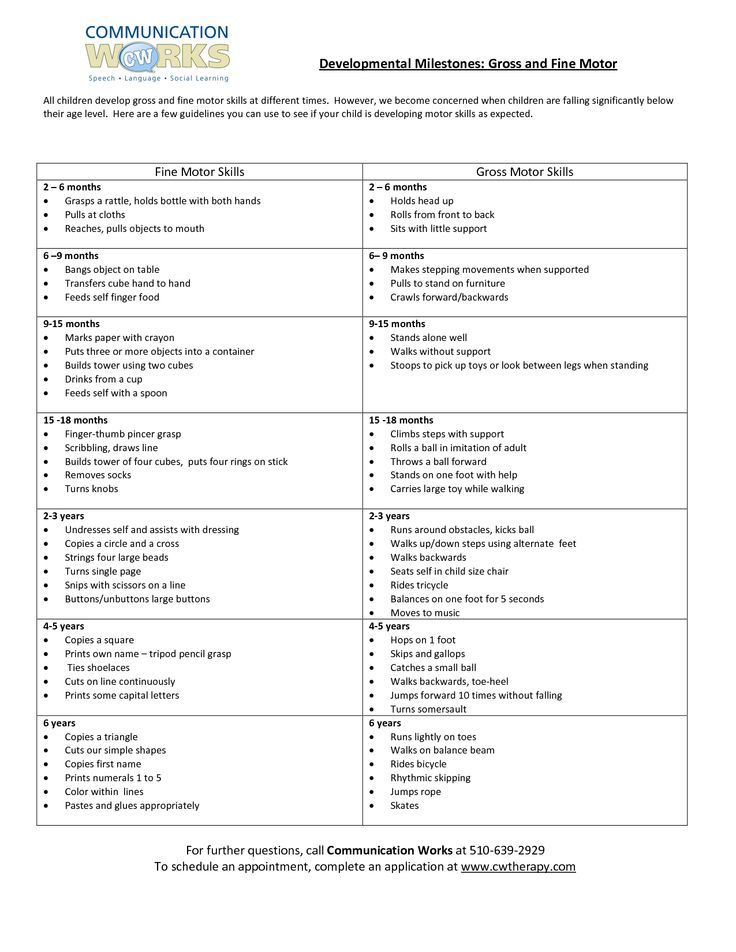 These skills help them to eventually learn to write.
These skills help them to eventually learn to write.
Fine motor skills are important. Evidence suggests there's a link between fine motor skills development and language, literacy and brain development.
Other examples of fine motor skills include:
- clapping hands
- cleaning teeth
- picking up and putting objects down
- putting on shoes
- rolling playdough
- shaking musical instruments
At what age will my child develop fine motor skills?
While all children develop at their own pace, they do reach some milestones within certain age ranges.
Babies start to grasp objects using their hands (but not necessarily their thumbs) between 5 and 6 months old. They usually start to play with hand-held toys between 6 and 12 months.
By 18 months, most toddlers will attempt more complex skills. These may include:
- drinking from a cup independently
- trying to dress themselves
- using a crayon or pencil
From 2 years old, toddlers' fine motor skills become more sophisticated.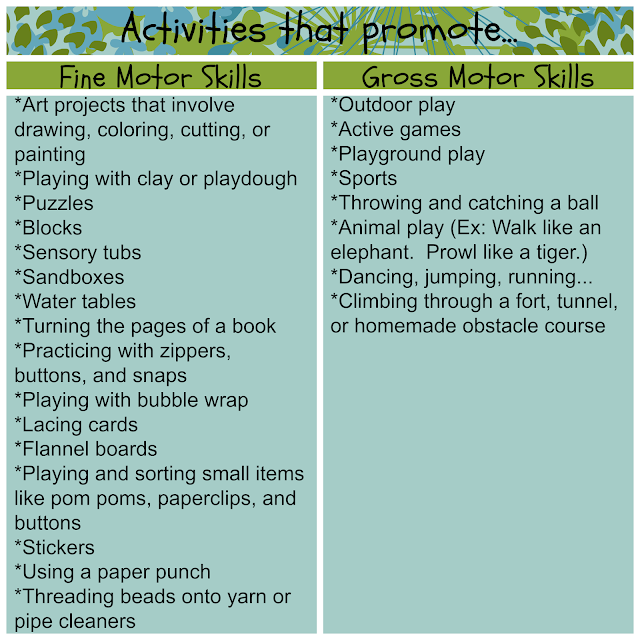 They may start to show an interest in:
They may start to show an interest in:
- scribbling
- drawing
- trying to write
Between 2 and 3 years old, they might be able to turn doorknobs and screw jar lids.
By 5 years old, your child might show a preference for one hand over the other.
How can I help my child improve their fine motor skills?
You can help your child grow and practise their newfound skills through play and activities.
- Paint, draw, glue and cut (with safety scissors).
- Pick up objects with tongs or toy tweezers.
- Play with blocks, Lego or do puzzles together.
- Roll playdough into shapes and cut with cookie cutters.
- Sand play using spades and buckets.
- Stacking cups or containers so they can pop the smaller ones into the larger ones. They can also use them to fill with water and practise pouring.
- Thread beads.
Gross motor skills
Gross motor skills involve the movement of the larger muscles in their arms, legs, and torso, such as:
- crawling
- jumping
- running
- throwing
You might notice that as your toddler builds their gross motor skills, they don't like to keep still.
When will my child develop gross motor skills?
Like fine motor skills, kids start developing gross motor skills when they're small babies. Even in their first 2 months, babies will kick their legs and wave their arms around.
At 6 to 8 months old, your baby should be able to roll, reach and sit independently (if only briefly).
Between 12 and 18 months, most babies are walking.
By 2 years old, toddlers can typically:
- jump over small objects
- throw a small ball or object
- walk up and down stairs
Between 2 and 3 years, kids are capable of more complex movements such as:
- climbing stairs without holding the railing
- running faster
- avoiding obstacles
At 3 to 5 years old, movement may progress to:
- climbing on play equipment
- walking on a balance beam
How can I help my child improve their gross motor skills?
Give your child the space to safely explore their environment and practise their gross motor skills.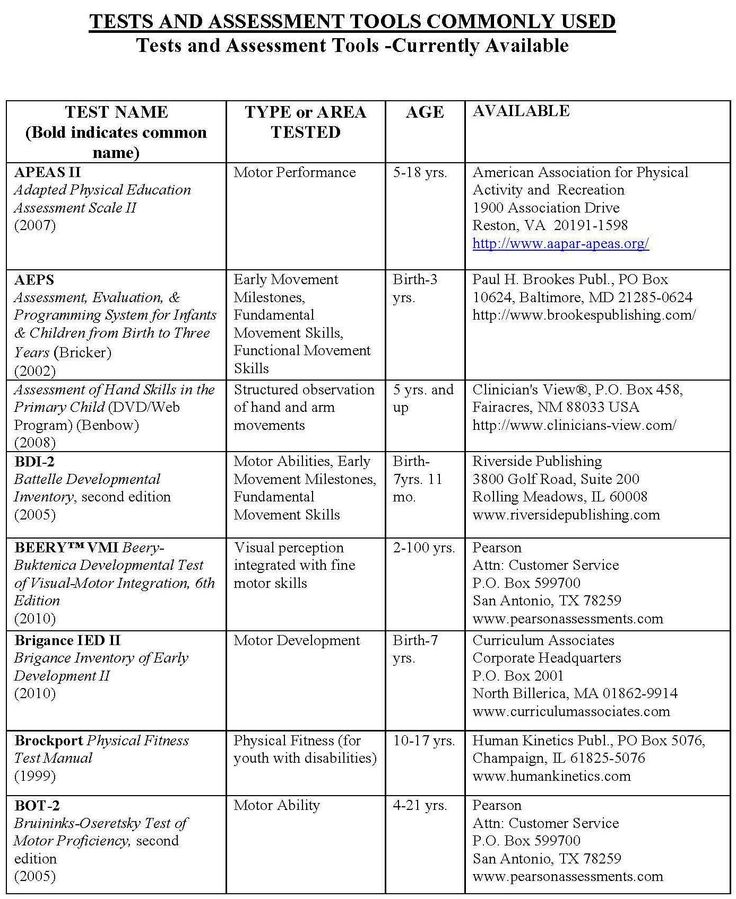
You can expect a few falls and bumps. They'll likely be testing their physical limits to know how far they can run, climb, and jump. You can:
- blow and chase bubbles outside
- dance to music at home
- encourage them to 'help' with everyday tasks, such as gardening or hanging clothes on the line
- throw a large ball to them, and have them throw it back
- visit playgrounds, parks, and the beach
- wheel, push or ride on large toy
Try to limit screen time, as this can inhibit movement and physical play.
When to seek help
It’s normal for children to take different amounts of time to reach different milestones. However, if you feel like your child's motor skills aren't developing well, seek advice. See your doctor or child health nurse if your 2 or 3-year-old:
- can't run
- can't walk up and down stairs, even with help
- has difficulty using small objects, like a crayon
- doesn't scribble or try to draw
- loses the physical skills they had before
Where can I get more information and support?
For resources on helping your child’s motor skills develop, you can visit the Learning Potential website.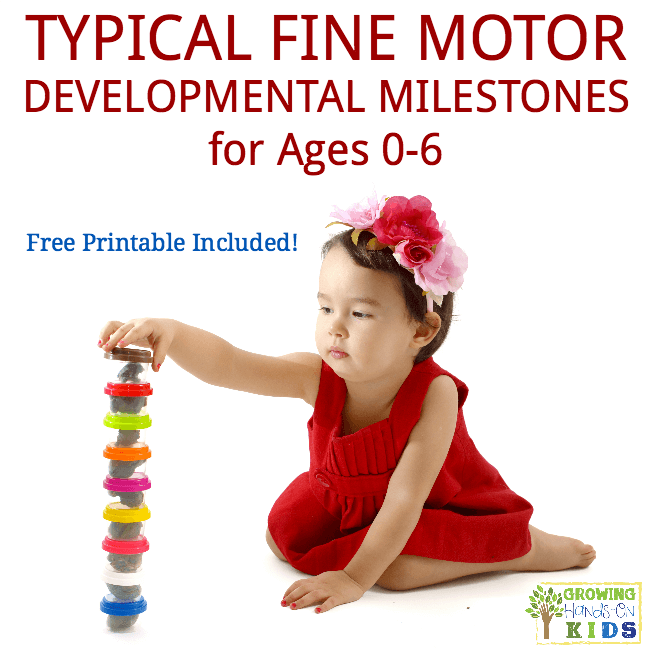
You can call Parentline in your state or territory for advice and information:
- Parentline ACT: (02) 6287 3833, Mon to Fri, 9am – 5pm AEST / Sat, 10am – 12 midday
- Parent Line NSW: 1300 1300 52, Mon to Fri, 9am – 9pm / weekends, 4pm – 9pm
- Parentline Queensland and Northern Territory: 1300 30 1300, 7 days, 8am – 10pm
- Parent Helpline South Australia: 1300 364 100, 7 days, 7.15am – 9.15pm
- Parent Line Tasmania: 1300 808 178, 24 hours, 7 days
- Parentline Victoria: 13 22 89, 7 days, 8am – 12 midnight
- Ngala Parenting Line WA: (08) 9368 9368 or 1800 111 546, Open 7 days a week, 8am – 8pm
Speak to a maternal child health nurse
Call Pregnancy, Birth and Baby to speak to a maternal child health nurse on 1800 882 436 or video call. Available 7am to midnight (AET), 7 days a week.
Sources:
International journal of environmental research and public health (A Network Perspective on the Relationship between Screen Time, Executive Function, and Fundamental Motor Skills among Preschoolers), Queensland Government Early Childhood Education and Care (Developing motor skills), Victoria State Government (Literacy Teaching Toolkit - Fine motor), Australian Children's Education and Care Quality Authority (Developmental milestones and the Early Years Learning Framework and the National Quality Standards), Children's Health Queensland Hospital and Health Service (Red Flags Early Identification Guide), Healthy WA (Child development)Learn more here about the development and quality assurance of healthdirect content.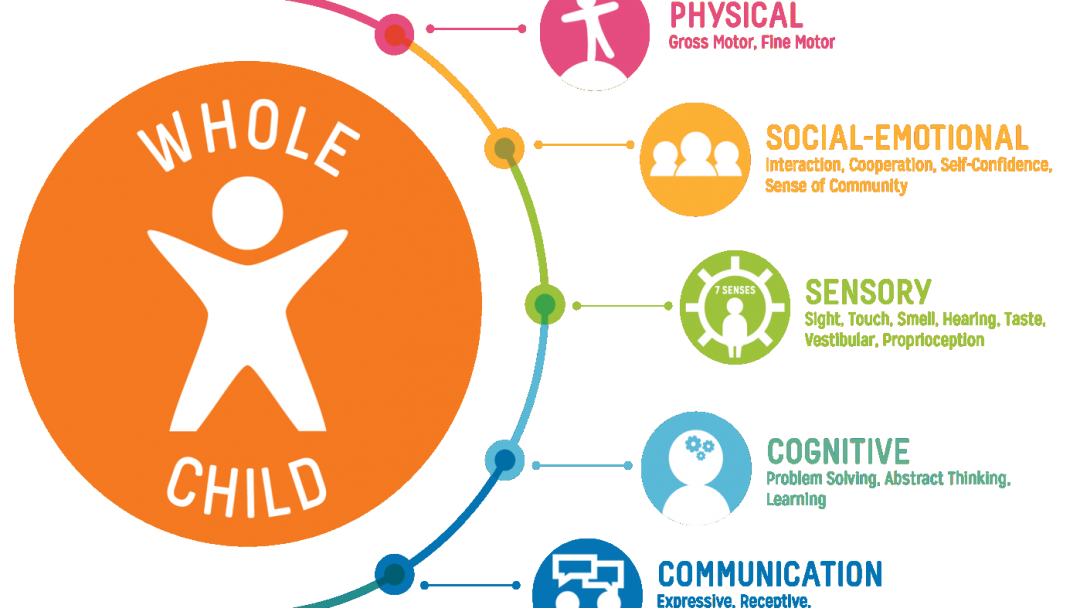
Last reviewed: July 2022
Back To Top
Related pages
- Physical activity and exercise for children
- Young children and play
- Baby walkers and exercise jumpers
Need more information?
Toddler development: Getting dressed
Learning how to dress and undress are lifelong skills that start in childhood. Learn how to encourage your toddler to start dressing themselves.
Read more on Pregnancy, Birth & Baby website
Toddler development: Learning to feed themselves
Learning how to feed themselves, even if it's messy, is an important part of your toddler's development. Learn more here.
Read more on Pregnancy, Birth & Baby website
Handwriting skills for children | Raising Children Network
For toddlers and preschoolers, handwriting starts with drawing with crayons and chalk.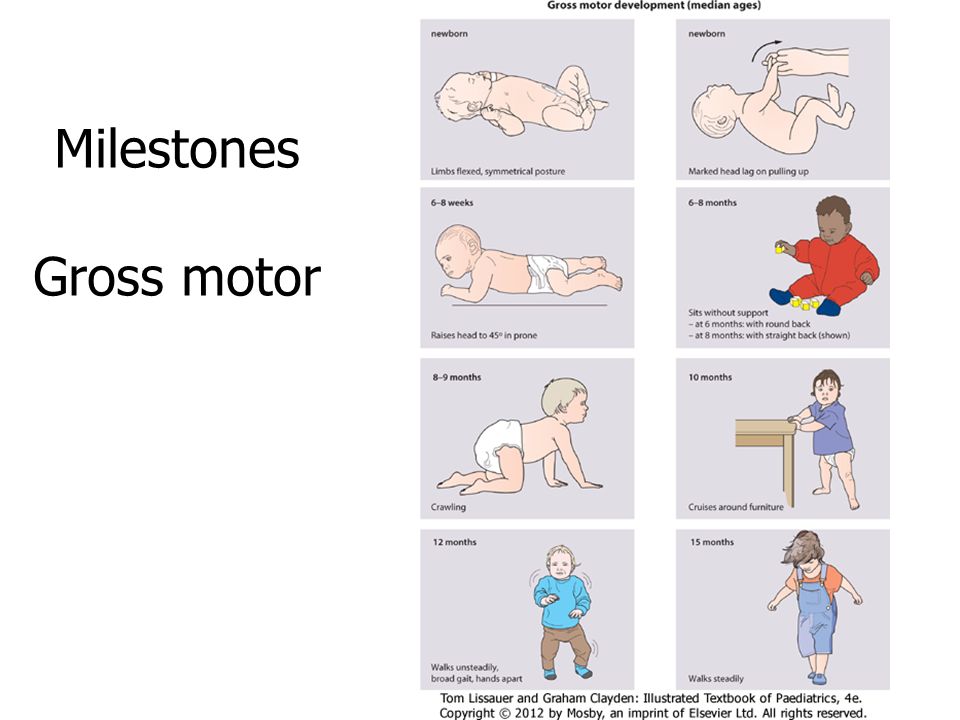 Older children learn formal handwriting at school. Read how to help.
Older children learn formal handwriting at school. Read how to help.
Read more on raisingchildren.net.au website
Development milestones - your child at 3 years
Every toddler develops at their own pace but there are certain development milestones that should be reached at 3 years of age. Find out more.
Read more on Pregnancy, Birth & Baby website
Homemade toys and free activities for kids | Raising Children Network
A little imagination can turn ordinary items into homemade toys and free activities for kids. Get ideas for babies, toddlers, preschoolers and school kids.
Read more on raisingchildren.net.au website
Your baby's growth and development - 12 months old
At 12 months, your baby is now a toddler.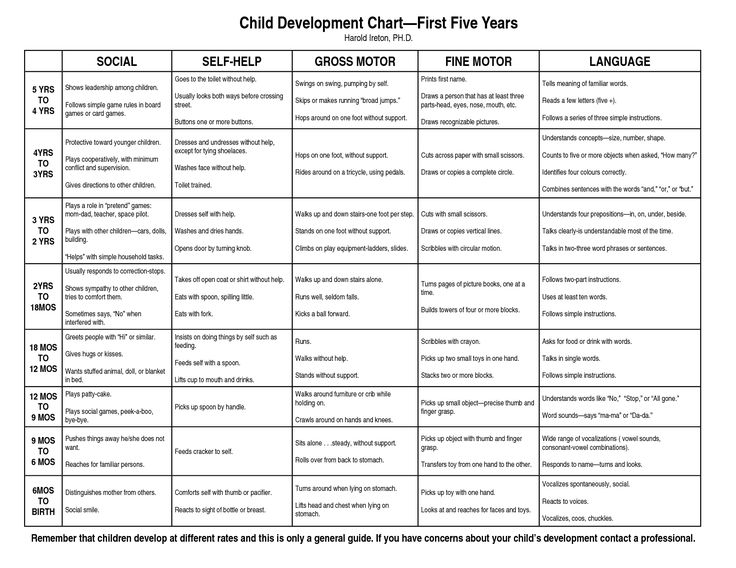 If they haven’t already, it won’t be long now before they take their first steps, develop a sense of humour, and tell you they love you.
If they haven’t already, it won’t be long now before they take their first steps, develop a sense of humour, and tell you they love you.
Read more on Pregnancy, Birth & Baby website
Child development at 4-5 years | Raising Children Network
At 4-5 years, your preschooler is learning to express emotion and likes to be around people. Read how to help child development and spot delay at this age.
Read more on raisingchildren.net.au website
Development milestones - your child at 5 years
Turning 5 is a time of new experiences and changes. Find out what development milestones should be reached by this stage and what are areas of concern.
Read more on Pregnancy, Birth & Baby website
7 ways play is beneficial for kids' health | Queensland Health
Playing benefits a child's physical, emotional and intellectual growth.
Read more on Queensland Health website
Playing with your baby
Not only is playing fun, but it's also the most effective way for children to learn. By playing, children can practise all the skills they'll need as they grow up.
Read more on Pregnancy, Birth & Baby website
Disclaimer
Pregnancy, Birth and Baby is not responsible for the content and advertising on the external website you are now entering.
OKNeed further advice or guidance from our maternal child health nurses?
1800 882 436
Video call
- Contact us
- About us
- A-Z topics
- Symptom Checker
- Service Finder
- Linking to us
- Information partners
- Terms of use
- Privacy
Pregnancy, Birth and Baby is funded by the Australian Government and operated by Healthdirect Australia.
Pregnancy, Birth and Baby is provided on behalf of the Department of Health
Pregnancy, Birth and Baby’s information and advice are developed and managed within a rigorous clinical governance framework. This website is certified by the Health On The Net (HON) foundation, the standard for trustworthy health information.
This site is protected by reCAPTCHA and the Google Privacy Policy and Terms of Service apply.
This information is for your general information and use only and is not intended to be used as medical advice and should not be used to diagnose, treat, cure or prevent any medical condition, nor should it be used for therapeutic purposes.
The information is not a substitute for independent professional advice and should not be used as an alternative to professional health care. If you have a particular medical problem, please consult a healthcare professional.
Except as permitted under the Copyright Act 1968, this publication or any part of it may not be reproduced, altered, adapted, stored and/or distributed in any form or by any means without the prior written permission of Healthdirect Australia.
Support this browser is being discontinued for Pregnancy, Birth and Baby
Support for this browser is being discontinued for this site
- Internet Explorer 11 and lower
We currently support Microsoft Edge, Chrome, Firefox and Safari. For more information, please visit the links below:
- Chrome by Google
- Firefox by Mozilla
- Microsoft Edge
- Safari by Apple
You are welcome to continue browsing this site with this browser. Some features, tools or interaction may not work correctly.
How to develop fine motor skills in a child
Today we will look at what fine motor skills are, its features, ways of development using games and toys as examples, as well as the optimal age to start its development. Why is this issue getting so much attention? Let's figure it out together.
Article content:
- What is fine motor skills
- Features of the development of fine motor skills
- Games and exercises aimed at developing fine motor skills
- Lessons for the development of fine motor skills in children
- Fine motor toys
- At what age should you develop fine motor skills
- Terminals
What is fine motor skills
Fine motor skills are the sequence and precision of movements required to perform various actions with small objects using the hands, fingers and toes.
Fine motor skills can be traced in children from an early age, when they are just learning to hold a toy. First comes the development of the hand, finger movements, then the formation of speech is formed. The formation of speech through the development of fine motor skills occurs due to the influence of nerve endings on the brain regions responsible for motor skills and speech, which are located next to each other. nine0003
In addition to the main function - the development of speech - fine motor skills affect the development of mental processes: thinking, memory, imagination, ability to orientate in space.
Features of the development of fine motor skills
The ability to master fine motor skills in children does not develop by itself, that is, it does not have a hereditary factor. Of great importance in this matter are adults who, by their example, involve the child in various activities, develop him systematically and purposefully. This hypothesis was first put forward by the Russian scientist Ivan Mikhailovich Sechenov. Subsequently, other scientists, doctors, teachers and specialists in various fields began to focus on this opinion as a key one. nine0003
Why is such attention paid to the development of fine motor skills? For children, it means the formation of basic skills and abilities.
- The speech of the child is formed, which contributes to a comfortable stay in the children's team.
- Skills of various movements are developed. The child can play with toys on his own without distracting an adult.
- Self-care skills are strengthened. The child acquires the ability to independently hold a spoon, tie shoelaces, fasten buttons and other items on clothes. nine0012
- Social bonds are established with peers and adults through the ability to communicate clearly and maintain dialogue.
- Readiness to study at school is formed in the aggregate of all the above reasons.
Games and exercises aimed at developing fine motor skills
The main activity of preschool children is play. We have selected for you a variety of games and exercises, among which you are sure to find something that suits you and your child. nine0003
- Folding toys. We put a transparent container in front of the child and put small toys separately. We suggest putting the toys in the container with your right hand. Then we pour them back, and ask you to repeat the same steps with your left hand.
- Games with cereals. In one container, mix two types of cereals, for example, rice and buckwheat. It is necessary that the child spread these cereals into different containers. You can complicate the game by adding other small items to the cereal mixture, such as beads, buttons, pebbles. nine0012
- Paper tearing exercise. First, we draw arbitrary lines on a sheet of paper. We offer the child to tear the paper with his hands exactly along the drawn lines. You can complicate the task by depicting geometric shapes.
- Page turning exercise. As the child grows older, instead of tearing a sheet of paper, you can offer to flip through the pages of your favorite book.
This exercise also encourages the child's early interest in reading literature.
nine0011 Smooth out wrinkled paper. We put a crumpled sheet of paper in front of the child and offer to smooth it so that not a single bent corner remains. You can complicate the exercise by offering to perform it with one hand, while holding the sheet with your thumb. - Dice games. We give the task to collect various figures from cubes: a tower, a house, a car, etc. Pyramid rings are also suitable for these games. Tasks become more difficult as the child masters the construction of simple figures. nine0012
- Lacing games. Available in various options. It can also be an unnecessary shoe that can be given to the child to lace up and unlace. It can also be a card in which holes for laces are made. In any case, the actions with these items are the same and have one goal - to teach the child to cope with the laces on their own, since this skill will be useful to him in the future.
- Exercises with counting sticks.
Please lay out geometric shapes on the table. First, the child performs tasks according to the model, and then independently according to verbal instructions. An additional plus of this exercise is the formation of elementary mathematical representations. nine0012
- Games with covers. Here you can offer various containers and vessels with lids that the child will independently twist and unscrew. And if you tell your child that you can’t cope without him, you will give a motive to become your main assistant.
- Finger painting in the sand. Invite the child to draw with all fingers alternately geometric shapes or any other pattern that he wishes. Interaction with sand also has a positive effect on the central nervous system. nine0012
Lessons for the development of fine motor skills in children
In addition to games for the development of fine motor skills, you should engage in a variety of activities that children will undoubtedly like:
- modeling from plasticine, clay or dough;
- drawing or coloring with paints, pencils, crayons;
- construction from kits, paper, cubes;
- crafts made of paper, natural or waste materials; nine0012
- stringing beads, buttons on a string;
- mosaic picking;
- ball games;
- peeling fruits, e.
g. tangerines;
- work with special manuals-copybooks.
Fine motor toys
What could be better for a child than a new toy? Only a toy that contributes to its comprehensive development.
- Massage embossed foot mats. Ideal to use after waking up to tone the body. You can purchase a puzzle mat that he can assemble and disassemble on his own. If you want to focus on the development of cognitive skills, you can purchase a rug with numbers or letters. nine0012
- Magnets. Place the magnets on the refrigerator or a special magnetic board. The child will definitely be interested in them, and will independently move them on the surface. Depending on the goal pursued, you can purchase magnets of various shapes, for example, in the form of numbers.
- Kinetic sand. Tactilely pleasant not only for children, but also for adults. Such sand does not get your hands dirty, so it will become a favorite toy for children and an assistant for adults.
- Easel for drawing. There are options for easels on which you can draw on both sides: on the one hand - with special crayons, and on the other - with paints. nine0012
- Massage balls. Perfect for finger games. Thanks to the spikes, they actively affect the areas of the palms and fingers.
- Constructors. You can choose a set from any manufacturer. You should focus on safety for the child, age and gender. In addition to the development of fine motor skills, it stimulates the development of modeling and design skills.
- Finger Theatre. It combines the possibilities of the comprehensive development of the child. In addition, it improves the expressiveness of speech, memory, imagination, acting skills. This option should definitely be used if you notice that one hand is more developed than the other. nine0012
- Busyboard. Recently a popular manual for the development of fine motor skills. It is a wooden structure, on which various objects are attached on both sides.
These can be laces, caps, locks, switches, gears, etc. Such a toy will help parents, as the baby can play it independently and safely.
At what age should one develop fine motor skills? nine0003
It is important to pay attention to the motor skills of the hands for at least a few minutes every day.
- For children from nine months of age, pick up large items such as beads or pyramid rings.
- At the age of 1 year, you can organize games with natural materials: sand, clay, cones, pebbles, etc.
- After 2 years, the baby will be happy to do finger exercises with an adult. Saying various nursery rhymes along with hand movements will help to teach hand and tongue coordination. And also better remembered by the child himself. nine0012
- After 3 years, paper exercises should be used. Usually, by these years, the baby has mastered the skill of working with scissors, so it becomes possible to model applications.
- And from the age of 4-6, origami is mastered as one of the most difficult types of paper games.
At whatever age you are engaged in the development of fine motor skills in children, it is necessary to organize this activity so that it brings not only benefit, but also pleasure to the child. nine0003
Conclusions
In the age of technological progress and the early use of phones, tablets and computers by children, other aspects of child development are regressing. And, first of all, speech suffers. The relationship between fine motor skills and speech, as well as the development of mental processes, has already been established.
Systematic work on the development of fine motor skills is necessary throughout the preschool period, since by the age of seven the brain areas responsible for its development have already been formed. A child, going to school, should be prepared for new loads, in particular, for mastering writing skills, and not learning how to hold a pen or pencil correctly. Lack of basic skills can lead to unstable self-esteem, inability to build social connections, and poor academic performance. nine0003
The network of children's development centers "Baby Club" will be happy to help in the development of fine motor skills of your child. A developing object-spatial environment, highly qualified specialists who love their work with all their hearts, and cozy groups will not leave anyone indifferent.
General development classes or specialized programs - the choice is yours. Contact us if your goal is to raise a developed, open, free, inquisitive little man.
23 GAMES FOR THE DEVELOPMENT OF CHILDREN'S FINE MOTOR SKILLS. nine0001
1. ROLLING THE BALLS.
Children roll small balls on the table (on the playing field, on which you can draw different paths - straight, curved, in a spiral). During the game, the ball should not slip out from under the palm of your hand and should roll exactly along the track. Tell your baby: “Naughty balls! So they try to run away. Don't let them go!" Balls can be rolled both with palms (in the first games) and with one finger (in subsequent games).
2. GAME WITH RAISINS.
Always very joyful for both mother and child and useful for the whole family. Make dough, roll it out. Invite your child to decorate the dough with raisins. Show how to take the raisin correctly (“tweezer grip” with two fingers - thumb and forefinger). Show that the raisins should be laid out throughout the dough at a distance from each other. Then bake the resulting pie and eat it with the whole family! Joy is guaranteed!
3. SORTING SMALL OBJECTS
It is very important that the baby does this either with a pinch (with three fingers) or with the “tweezer grip” method (grabbed with two fingers - thumb and forefinger). nine0177 In this case, the remaining fingers should be bent and not interfere. Show your child the correct way to do this exercise.
Mix two types of beads (or peas and beans; or shells and pebbles, or buttons of various shapes and sizes) in one box and ask for help. You can sort by color (if you mixed beads of two colors), by shape, by size. First, the baby sorts two types of objects of a sufficiently large size. Then the task becomes more complicated - smaller items are taken and sorted already into 3-5 groups (for example, beans in one box, peas in another, beads in a third, pebbles in a fourth, shells in a fifth). nine0003
Sorting always takes place in the game. For example, our chicken loves peas, and our cockerel loves beans. They need to divide their food into bowls.
Or one doll likes pasta and another likes beans. Give everyone what they love.
Sorting small items is very important in the third year of a child's life.
4. KNESSING PLASTILINE.
Before modeling, be sure to let a child of any age stretch the plasticine. This is a very useful exercise for developing fine motor skills. In this regard, ordinary domestic plasticine is much more useful than soft imported one. nine0003
5. STRINGING THE RINGS ON THE ROD OF THE PYRAMID (development of correlative hand movements).
First, the baby learns to disassemble the pyramid toy (it's easier), and only then to assemble it. Please note that even the smallest children easily remember the color sequence in the pyramid and collect it simply from memory, and not by comparing values. Therefore, if you want to teach them to compare the size of the rings and arrange them from largest to smallest in sequence, then you need a pyramid with rings of the same color! nine0003
6. SPILLING.
Use a funnel, scoop, spoon to pour different bulk solids from one container to another. You can pour sand, cereals, peas, lentils. Use different dishes - you can pour into a glass, a vessel with a narrow neck using a funnel. You can pour sand into the box with your hands, hide and look for various small toys in the sand.
7. GAMES - LACES (lace up an apple to the hedgehog's back, clothing details and other plot laces).
These games quickly bore the baby. Therefore, it is better if you have a doll whose shoes or clothes are tied with a lace. Putting on and undressing this doll in play will make it easy and fun for your little one to practice lacing. nine0003
8. EXERCISES WITH PAPER:
1) kneading - development of arm strength (after that you get a “ball” that can be thrown into the basket from a distance),
2) tear (development of correlative movements) - we grab the sheet with the fingers of both hands and pull it in different directions. You get stripes. We put these strips in a box and make a “rain” by pouring our strips out of the box.
Important tips:
* When you offer your child paper for this exercise, you should always show him where to get the paper from. And they themselves should always take paper for this game only from this box. Otherwise, the baby will understand that you can tear everything that is around and tear books or something else you need. There is always a place for this exercise. nine0003
* Don't let us tear up old books and magazines. Any game we bring up attitude to life. And this is an example of unacceptable handling of the book. In addition, printing ink is not at all useful for young children.
* Old wallpaper rolls can be used for this exercise.
3) make applications from paper balls (crumple the paper, tear it into strips, then tear the strips into squares, roll each square on the palm into a ball, the silhouette is laid out with balls - for example, a cat, a lamb, a cloud)
4) make appliqués from pieces of paper that the baby picked. Draw a picture on a piece of paper. And stick pieces of paper on it according to the plot. White glued pieces can depict snow or clouds, blue ones - a river, yellow ones - autumn foliage of trees.
9. PUSHING SMALL OBJECTS INTO PLASTILINE (beads, seeds, shells, small stones).
This is how we can make pictures - mosaics on plasticine. And you can also help the hero of the game - for example, make a “blue river” (smear plasticine on a strip of cardboard) and build a bridge across the river (press pebbles into plasticine). And then toys will pass along this bridge and thank the baby for their help. nine0003
10. RUBBER PEAR.
Choose a small pear (available at the pharmacy). By pressing it, a stream of air is obtained, with which you can blow off a cotton wool or leaflet from the table. You can even play football, trying to drive the cotton wool into the goal with a jet of air. For children of the first year of life, a pear is not needed, this role is played by rubber toys - squeakers, playing with which the baby develops hand strength.
11. GRINDING GRINDERS.
First, the baby learns to launch the spinning top, and then the tops of large sizes. And after that, give the baby tops of a small size. Instead of a top, use any other items: pyramid rings, balls, plastic bowls, etc. It is also useful to wind clockwork toys with a key. nine0003
12. USE OF CUTLERY - SPOONS, FORKS.
The ability to independently eat with a spoon, fork, drink from a cup is also a very important component of the development of the baby and the development of fine motor skills.
13. OPENING THE OBJECT WRAPPED IN PAPER - SURPRISE - "WHAT'S THERE?"
When the baby unfolds the paper and finds the gift and plays with it, wrap it up again and hide it in another paper. And try to find again. Teach your baby to wrap - to hide an item from an older sister or brother, dad, grandmother. Let them rejoice when his surprise is unwrapped. nine0003
14. FILLING THE BOTTLE WITH SMALL OBJECTS.
Beans, pebbles, balls can be put into a plastic bottle.
To make this exercise effective, show your child how to do it correctly:
- Grab small objects with either a pinch or two fingers (thumb and forefinger) - just show how you grasp the object.
- Hold the bottle with one hand and pick up one part at a time with the other hand. It is very important to ensure that the baby takes it correctly and one by one! nine0003
- At the end, close the bottle with a cap and rattle the resulting rattle.
15. DESIGNERS.
Different designers develop fine motor skills very well. It is important to have several designers at home (but always with a DIFFERENT principle of connecting parts). It is also very useful to make handicrafts, work with clay.
16. STRINGING BEADS WITH LARGE HOLES ON THE CORD.
I saw a very good idea for stringing in the kindergarten "Solnyshko" in Moscow. The teachers of this kindergarten collect old unnecessary felt-tip pens with a plastic case. This body is cut into pieces. It turns out multi-colored "tubes" that children string on a string like beads. nine0003
You can also string spools of thread, rings for curtains, details of designers, beads made of clay or salt dough, rings from small pyramids.
17. TURN THE PAGES OF THE BOOK ONE BY.
This exercise is available to a child from the age of one. For this, the pages of the first book must be thick, made of cardboard.
Show the child a book. And put a picture on the next page - a surprise. To find it, you need to turn the page. If it is difficult for the baby, then help him by slightly lifting the page. nine0003
18. UNLOAD AND TIE KNOTS, BOWS, BRAID, UNDO AND ZIP VELCRO, BUTTONS, BUTTONS, HOOKS, ZIPPERS, REMOVE AND PUT ON HAT, PULL SOCKS, REMOVE SHOES.
Although most often in modern families the task of mastering different types of fasteners for babies is solved with the help of a developing book or rug, but this is just the first stage. Then the baby trains to do this in life, in everyday life.
The baby's clothes should have different fasteners - buttons of different shapes and sizes, buttons. It should be borne in mind that it is much easier to fasten the clasp on a rug or another person than on yourself. nine0003
The situation when a child has only velcro on clothes and shoes during the entire preschool age leads to the fact that even second-graders at the age of 8-9 are not able to dress themselves if the clothes have a different type of fastener, and cannot even lace up the laces dressing up for gym! But the lack of independence of the child and dependence on an adult directly affects his further behavior and success in life.
Already at an early age, the baby can take off and put on his hat, stretch out his arms when putting on a sweater, put on and take off mittens and gloves, pull off socks, take off shoes, put his hands in sleeves, and legs in trouser legs, take off unbuttoned panties, coat, jacket - and this is also a contribution to the development of fine motor skills of the baby, and a very big contribution. nine0003
19. LAY OUT FIGURES FROM STICKS, FROM DIFFERENT TYPES OF MOSAIC.
20. OPEN AND CLOSE JARS (unscrew and screw caps).
To make it more interesting, hide a surprise inside by wrapping it in paper. And at the same time, the baby will practice unfolding and folding paper. What is hidden in the jar?
21. WINDING.
Winding a thick thread on a stick, on a spool, on a ball and unwinding. Winding a thick lace around your hand - your own or your mother's. nine0003
22. ROLLING THE PENCIL BETWEEN THE PALM.
First, try rolling the pencil across the table with your palm. Then show your child how to roll the pencil between the straightened palms in the hands (the pencil is in an upright position). At the end of the pencil, you can stick a picture that will “dance” - spin.
23. FINGER FOLK GAMES.
I wish you success and the joy of communicating with your children!
1. ROLLING THE BALLS.
Children roll small balls on the table (on the playing field, on which you can draw different paths - straight, curved, in a spiral). During the game, the ball should not slip out from under the palm of your hand and should roll exactly along the track. Tell your baby: “Naughty balls! So they try to run away. Don't let them go!" Balls can be rolled both with palms (in the first games) and with one finger (in subsequent games). nine0003
2. GAME WITH RAISINS.
Always very joyful for both mother and child and useful for the whole family. Make dough, roll it out. Invite your child to decorate the dough with raisins. Show how to take the raisin correctly (“tweezer grip” with two fingers - thumb and forefinger). Show that the raisins should be laid out throughout the dough at a distance from each other. Then bake the resulting pie and eat it with the whole family! Joy is guaranteed!
3. SORTING SMALL OBJECTS
It is very important that the baby does this either with a pinch (with three fingers) or in the “tweezer grip” method (grabbed with two fingers - thumb and forefinger).
In this case, the remaining fingers should be bent and not interfere. Show your child the correct way to do this exercise.
Mix two types of beads (or peas and beans; or shells and pebbles, or buttons of various shapes and sizes) in one box and ask for help. You can sort by color (if you mixed beads of two colors), by shape, by size. First, the baby sorts two types of objects of a sufficiently large size. Then the task becomes more complicated - smaller items are taken and sorted already into 3-5 groups (for example, beans in one box, peas in another, beads in a third, pebbles in a fourth, shells in a fifth). nine0003
Sorting always takes place in the game. For example, our chicken loves peas, and our cockerel loves beans. They need to divide their food into bowls.
Or one doll likes pasta and another likes beans. Give everyone what they love.
Sorting small items is very important in the third year of a child's life.
4. KNESSING PLASTILINE.
Before modeling, be sure to let a child of any age stretch the plasticine. This is a very useful exercise for developing fine motor skills. In this regard, ordinary domestic plasticine is much more useful than soft imported one. nine0003
5. STRINGING THE RINGS ON THE ROD OF THE PYRAMID (development of correlative hand movements).
First, the baby learns to disassemble the pyramid toy (it's easier), and only then to assemble it. Please note that even the smallest children easily remember the color sequence in the pyramid and collect it simply from memory, and not by comparing values. Therefore, if you want to teach them to compare the size of the rings and arrange them from largest to smallest in sequence, then you need a pyramid with rings of the same color! nine0003
6. SPILLING.
Use a funnel, scoop, spoon to pour different bulk solids from one container to another. You can pour sand, cereals, peas, lentils. Use different dishes - you can pour into a glass, a vessel with a narrow neck using a funnel. You can pour sand into the box with your hands, hide and look for various small toys in the sand.
7. GAMES - LACES (lace up an apple to the hedgehog's back, clothing details and other plot laces).
These games quickly bore the baby. Therefore, it is better if you have a doll whose shoes or clothes are tied with a lace. Putting on and undressing this doll in play will make it easy and fun for your little one to practice lacing. nine0003
8. EXERCISES WITH PAPER:
1) kneading - development of arm strength (after that you get a “ball” that can be thrown into the basket from a distance),
2) tear (development of correlative movements) - we grab the sheet with the fingers of both hands and pull it in different directions. You get stripes. We put these strips in a box and make a “rain” by pouring our strips out of the box.
Important tips:
* When you offer your child paper for this exercise, you should always show him where to get the paper from. And they themselves should always take paper for this game only from this box. Otherwise, the baby will understand that you can tear everything that is around and tear books or something else you need. There is always a place for this exercise. nine0003
* Don't let us tear up old books and magazines. Any game we bring up attitude to life. And this is an example of unacceptable handling of the book. In addition, printing ink is not at all useful for young children.
* Old wallpaper rolls can be used for this exercise.
3) make applications from paper balls (crumple the paper, tear it into strips, then tear the strips into squares, roll each square on the palm into a ball, the silhouette is laid out with balls - for example, a cat, a lamb, a cloud)
4) make appliqués from pieces of paper that the baby picked. Draw a picture on a piece of paper. And stick pieces of paper on it according to the plot. White glued pieces can depict snow or clouds, blue ones - a river, yellow ones - autumn foliage of trees.
9. PUSHING SMALL OBJECTS INTO PLASTILINE (beads, seeds, shells, small stones).
This is how we can make pictures - mosaics on plasticine. And you can also help the hero of the game - for example, make a “blue river” (smear plasticine on a strip of cardboard) and build a bridge across the river (press pebbles into plasticine). And then toys will pass along this bridge and thank the baby for their help. nine0003
10. RUBBER PEAR.
Choose a small pear (available at the pharmacy). By pressing it, a stream of air is obtained, with which you can blow off a cotton wool or leaflet from the table. You can even play football, trying to drive the cotton wool into the goal with a jet of air. For children of the first year of life, a pear is not needed, this role is played by rubber toys - squeakers, playing with which the baby develops hand strength.
11. GRINDING GRINDERS.
First, the baby learns to launch the spinning top, and then the tops of large sizes. And after that, give the baby tops of a small size. Instead of a top, use any other items: pyramid rings, balls, plastic bowls, etc. It is also useful to wind clockwork toys with a key. nine0003
12. USE OF CUTLERY - SPOONS, FORKS.
The ability to independently eat with a spoon, fork, drink from a cup is also a very important component of the development of the baby and the development of fine motor skills.
13. OPENING THE OBJECT WRAPPED IN PAPER - SURPRISE - "WHAT'S THERE?"
When the baby unfolds the paper and finds the gift and plays with it, wrap it up again and hide it in another paper. And try to find again. Teach your baby to wrap - to hide an item from an older sister or brother, dad, grandmother. Let them rejoice when his surprise is unwrapped. nine0003
14. FILLING THE BOTTLE WITH SMALL OBJECTS.
Beans, pebbles, balls can be put into a plastic bottle.
To make this exercise effective, show your child how to do it correctly:
- Grab small objects with either a pinch or two fingers (thumb and forefinger) - just show how you grasp the object.
- Hold the bottle with one hand and pick up one part at a time with the other hand. It is very important to ensure that the baby takes it correctly and one by one! nine0003
- At the end, close the bottle with a cap and rattle the resulting rattle.
15. DESIGNERS.
Different designers develop fine motor skills very well. It is important to have several designers at home (but always with a DIFFERENT principle of connecting parts). It is also very useful to make handicrafts, work with clay.
16. STRINGING BEADS WITH LARGE HOLES ON THE CORD.
I saw a very good idea for stringing in the kindergarten "Solnyshko" in Moscow. The teachers of this kindergarten collect old unnecessary felt-tip pens with a plastic case. This body is cut into pieces. It turns out multi-colored "tubes" that children string on a string like beads. nine0003
You can also string spools of thread, rings for curtains, details of designers, beads made of clay or salt dough, rings from small pyramids.
17. TURN THE PAGES OF THE BOOK ONE BY.
This exercise is available to a child from the age of one. For this, the pages of the first book must be thick, made of cardboard.
Show the child a book. And put a picture on the next page - a surprise. To find it, you need to turn the page. If it is difficult for the baby, then help him by slightly lifting the page. nine0003
18. UNLOAD AND TIE KNOTS, BOWS, BRAID, UNDO AND ZIP VELCRO, BUTTONS, BUTTONS, HOOKS, ZIPPERS, REMOVE AND PUT ON HAT, PULL SOCKS, REMOVE SHOES.
Although most often in modern families the task of mastering different types of fasteners for babies is solved with the help of a developing book or rug, but this is just the first stage. Then the baby trains to do this in life, in everyday life.
The baby's clothes should have different fasteners - buttons of different shapes and sizes, buttons. It should be borne in mind that it is much easier to fasten the clasp on a rug or another person than on yourself. nine0003
The situation when a child has only velcro on clothes and shoes during the entire preschool age leads to the fact that even second-graders at the age of 8-9 are not able to dress themselves if the clothes have a different type of fastener, and cannot even lace up the laces dressing up for gym! But the lack of independence of the child and dependence on an adult directly affects his further behavior and success in life.
Already at an early age, the baby can take off and put on his hat, stretch out his arms when putting on a sweater, put on and take off mittens and gloves, pull off socks, take off shoes, put his hands in sleeves, and legs in trouser legs, take off unbuttoned panties, coat, jacket - and this is also a contribution to the development of fine motor skills of the baby, and a very big contribution. nine0003
19. LAY OUT FIGURES FROM STICKS, FROM DIFFERENT TYPES OF MOSAIC.
20. OPEN AND CLOSE JARS (unscrew and screw caps).
To make it more interesting, hide a surprise inside by wrapping it in paper. And at the same time, the baby will practice unfolding and folding paper. What is hidden in the jar?
21. WINDING.
Winding a thick thread on a stick, on a spool, on a ball and unwinding. Winding a thick lace around your hand - your own or your mother's. nine0003
22. ROLLING THE PENCIL BETWEEN THE PALM.
First, try rolling the pencil across the table with your palm. Then show your child how to roll the pencil between the straightened palms in the hands (the pencil is in an upright position). At the end of the pencil, you can stick a picture that will “dance” - spin.
23. FINGER FOLK GAMES.
I wish you success and the joy of communicating with your children!
Author - Valasina Asya, candidate of pedagogical sciences, host of the Internet Workshop of developing games "Through the game - to success!", author of the site "Native Path".


